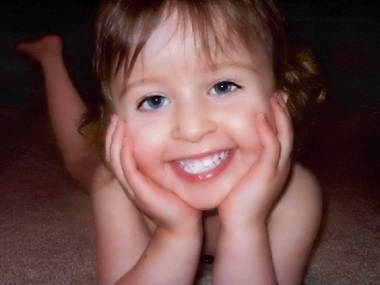
Hannah Day lives in Victoria, Canada and has been in and out of hospital for most of her short life. Hannah is four years old and is battling leukemia.
The Day family went public just after Christmas to try and find a stem-cell donor for Hannah. Thousands of people rallied, submitting cheek swabs to OneMatch, a stem-cell and marrow registry run by Canadian Blood Services in the hope of finding a suitable donor. The odds of finding a match were estimated as being one in a million. The response was tremendous, with 40,000 people signing up as potential donors in just 48 hours.
After several weeks, Mom Brooke Ervin received good news on Monday: A match has been found. In fact, more than one.
But there was a heartbreaking twist.
“Matches were found, but now it won’t happen. Not for Hannah,” said Ervin from B.C. Children’s Hospital.
Doctors say the little girl has gone through too much radiation to successfully have a stem-cell transplant.
Doctors report Hannah’s body was exposed to so much radiation from her first cancer in 2012, a rare type called rhabdomyosarcoma, that she cannot now withstand a full stem-cell transplant, that would provide a promising chance of putting her cancer into remission.
The options now available to Hannah are Palliative care or, a rare, high-risk transplant called the Hail Mary procedure, that can be carried out next month that carries a 60 per cent chance of success.
“I bawled. I cried so hard. I can’t believe these are the choices we have after everyone’s hard work,” said the devastated mom. “I want everyone to know how thankful we are to see so many people try to save her life,” says Mom, Brooke Ervin. “It was successful and matches were found, but now it will not work. It is all on my shoulders now.”
The Hail Mary procedure, called a haplo-identical transplant, requires stem cells from Ervin. She is only a half-match, but doctors say because her stem cells once helped protect Hannah as a baby, they may also have a chance of killing off the remaining leukemia cells in Hannah’s body.
In an Ontario case in 2010, the haplo transplant was still considered an experimental procedure and had to be performed overseas. It remains rare. Hannah’s oncologist has only performed the procedure twice, said Ervin. She hasn’t yet asked if those treatments were successful.
“It was a horrible decision no family should have to make”, said Ervin, but for them there can only be one choice.
Canada currently has 326,000 people who are already registered as potential stem-cell donors. Hannah is one of 750 Canadians who are currently awaiting a stem-cell transplant.
To become a stem-cell donor you can fill out a questionnaire online if you’re between the ages of 17 and 35, and you’ll be sent a kit in the mail. A swab of your cheeks will reveal if you’re a suitable donor. Once identified as a match, donors will undergo one of two procedures. Stem cells can be harvested from bone marrow under general anesthetic, or through peripheral blood stem cell donation.
Source: http://globalnews.ca/news






